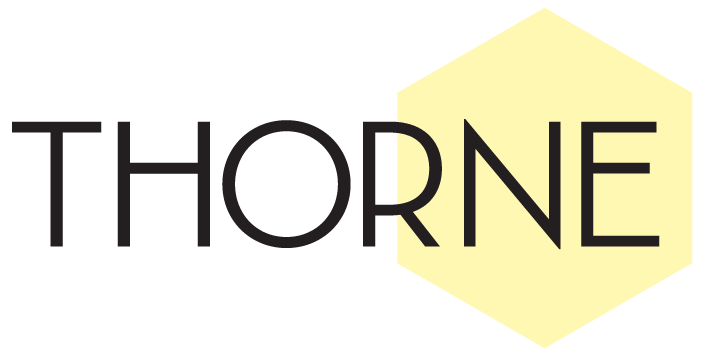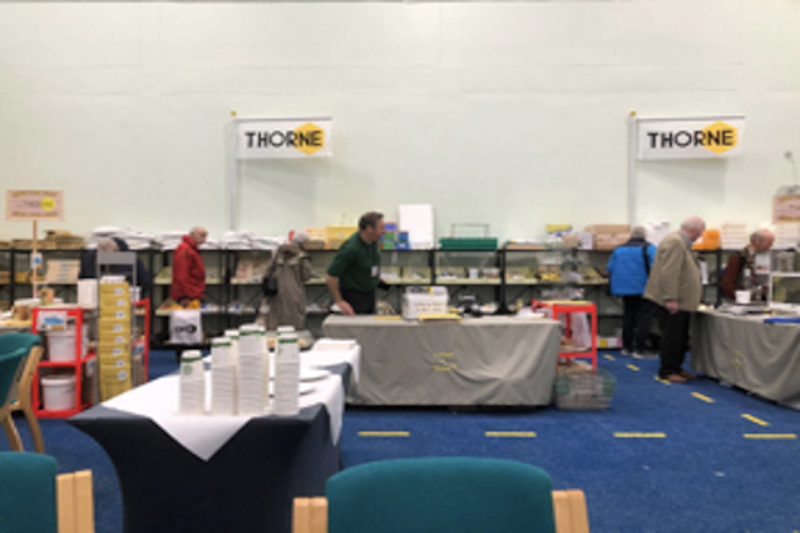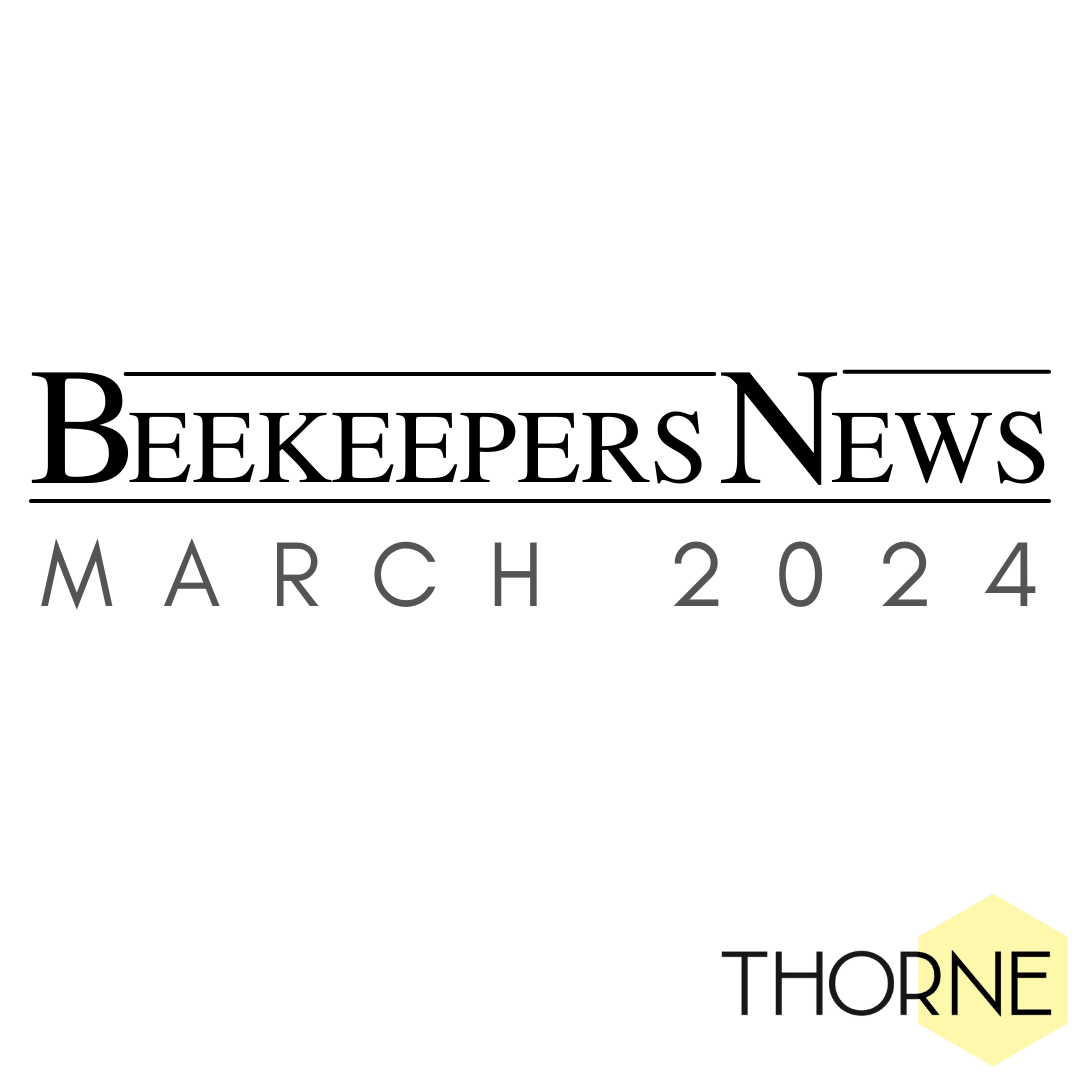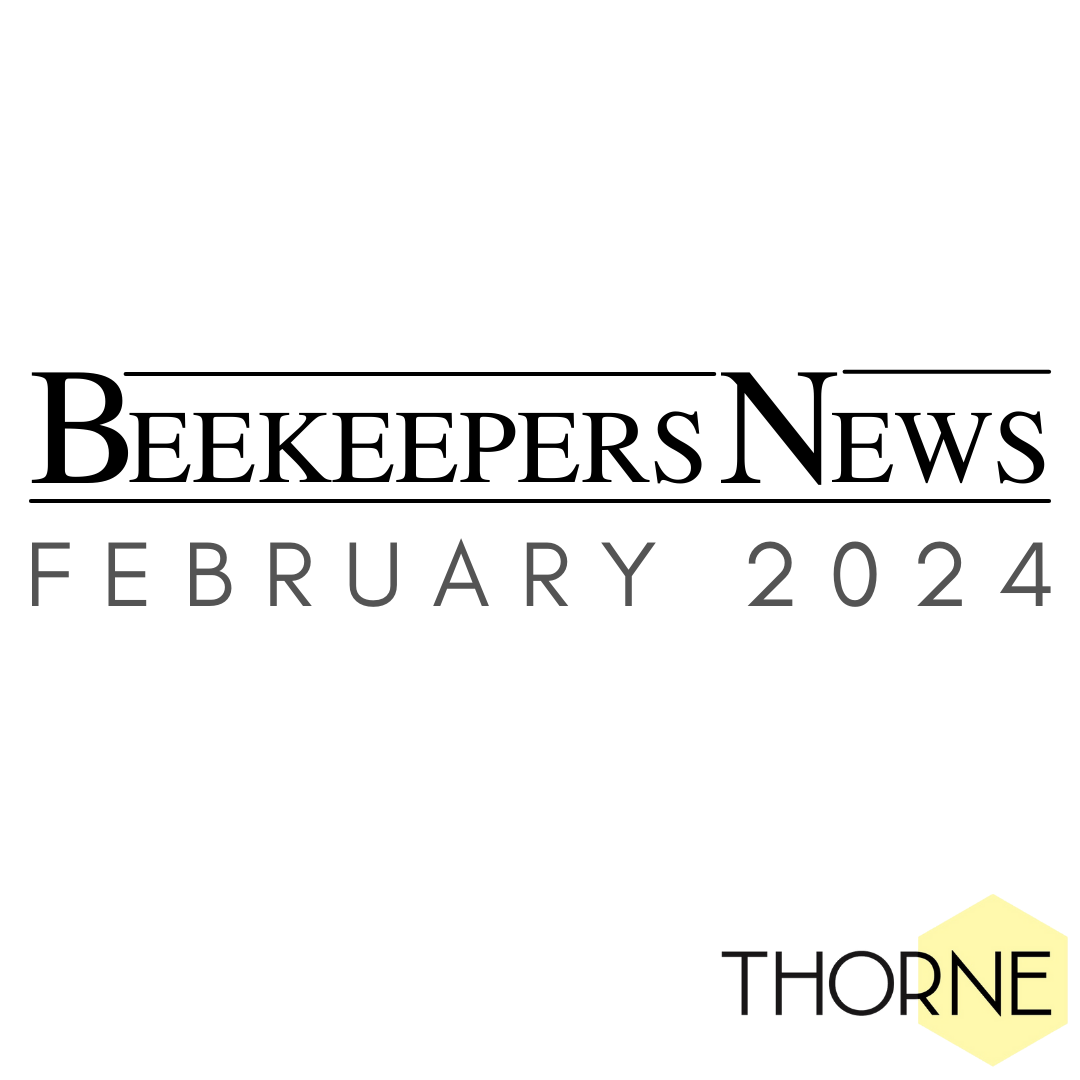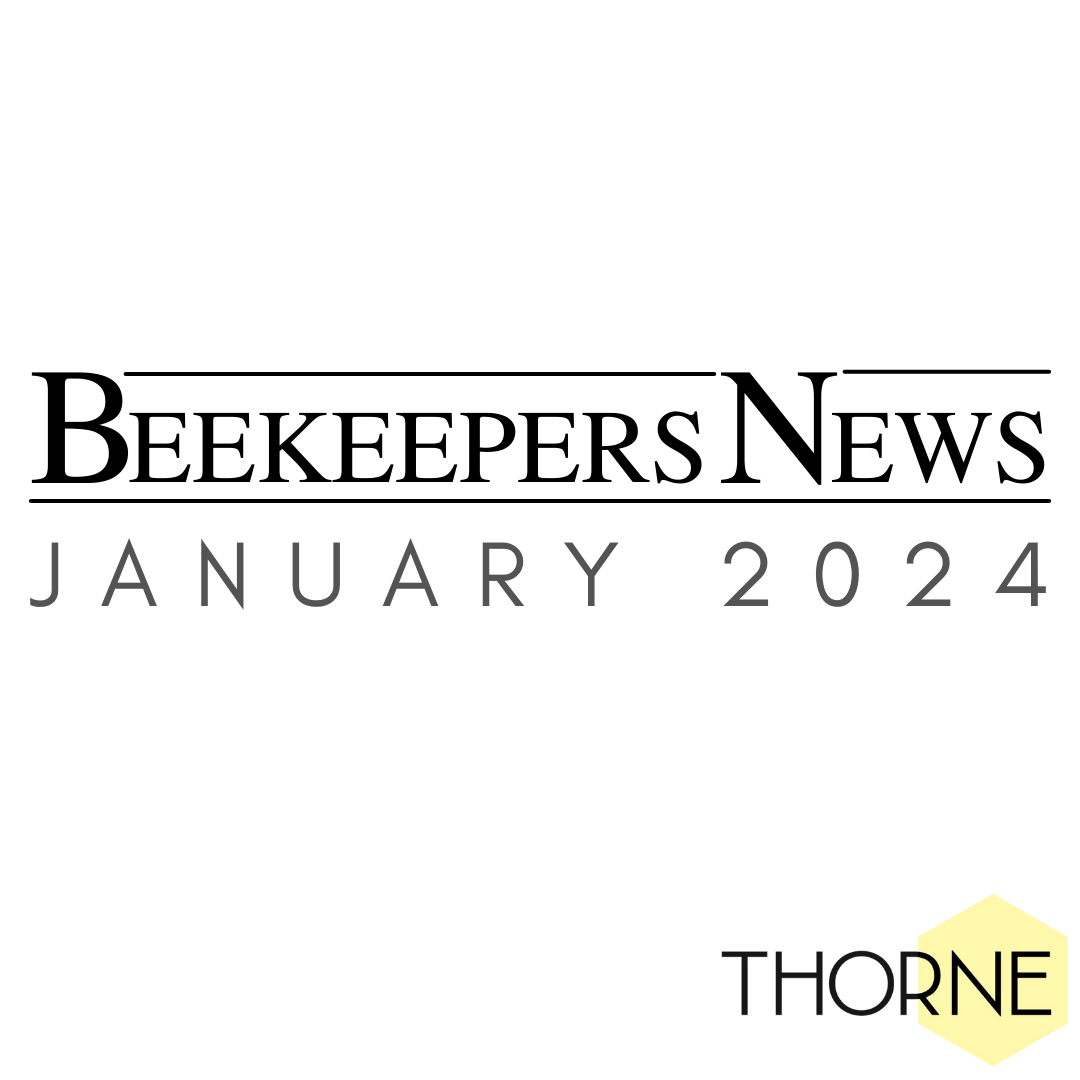February Roundup
The last winter sale orders have been despatched this month and we have started taking orders for the spring trade shows. In fact we have already attended two shows this month.
The Ulster Convention is never straightforward – and this time we had storm Dennis to contend with. I have never seen the wax gazebo strapped down quite as much. The preparation worked though and Colin and Anthony were kept busy with wax conversions and orders. The number of beekeepers seemed to be up this year, maybe something to do with the draw of the main speaker Tom Seeley. The photo shows the stand just as we opened for business.
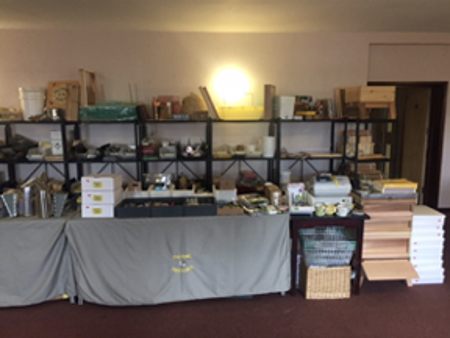
Anthony also went to the Holsworthy show again this year, taking a van full of wax, orders and stock. He and Abi (manager of our Devon branch) had a busy day serving customers and answering questions.
This month we have BeeTradex and the Welsh Spring Convention to look forward to. You can order now for collection at either of the events. We will be bringing a new hive with us to BeeTradex. The Drayton Hive is made from sustainable timber and as you can see looks very attractive.
More information and photos can be found at www.draytonbeehive.com
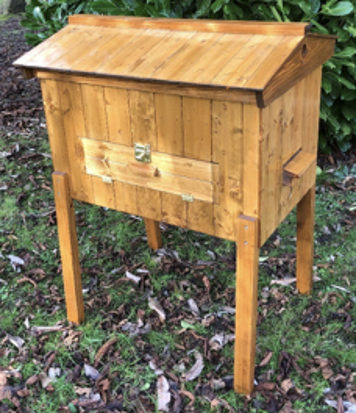
You should have all received catalogues by now. If you didn’t then please do let us know. We have included a four page pull-out especially for beginners or people interested in taking up the hobby. Please do give this out to friends, it should provide a useful guide.
We will be running our Introduction to Beekeeping one day courses again this year at our head office in Rand, Lincolnshire. There are three dates available. Tuesday 19th, Saturday 23rd and Saturday 30th May. The course costs £50 including lunch and we limit the number on each course to six people. Weather permitting the day will also include a 2 hour practical session in our apiary. For more information please email sales@thorne.co.uk.
Now an apology… in last months newsletter I completely forgot to wish our Scotland branch manager, Brian, a happy 60th birthday. Brian has worked for us since 1998, and before that he worked for over 20 years for Steele & Brodie. The photos below were on the front cover of our popular Beekeepers News magazine that was posted out to customers each quarter. The current shop, of course, is now based in Newburgh but the photos show the original shop in Tayport. Happy Birthday Brian!!
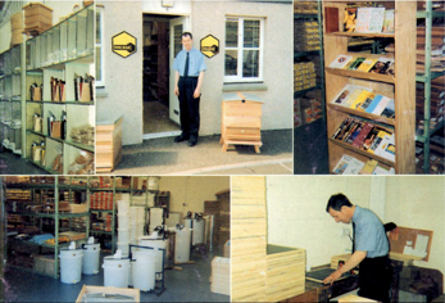

Ask the Expert – Who are Bee Inspectors?
Sound scary, don’t they? In reality, bee inspectors are avid beekeepers who care about our bees. They work for the National Bee Unit under the Animal and Plant Health Agency and essentially inspect colonies for notifiable diseases. The two diseases they look for in particular are American Foulbrood and European Foulbrood and they work to control outbreaks to stop it spreading to other apiaries. They base their inspections on a traffic light system where colonies within a certain distance of a diseased apiary will be top priority.
Inspectors also take part in the Bee Health Days which are well worth booking on to. There are usually only one of these per region per year so make sure to find out when yours is on. These days are made up of workshops which deal with a variety of beekeeping issues such as pests, diseases, apiary hygiene and also include an apiary session. It is a great opportunity to learn about bee health, meet up with your beekeeping friends and to familiarise yourself with your local and regional bee inspectors.
If you do get a call from an inspector, do not panic. They are not trying to catch you out! There is probably disease nearby and they are making sure your bees are not infected so they can rule you out from their rounds. It is always best to know for certain that your bees are healthy, even if you think they are fine. Inspectors can give you invaluable advice on all aspects of beekeeping if you are fortunate enough to get a call. If you are worried your bees may have a disease, you can ring your local inspector and they will be able to help you.
Make sure you are registered on BeeBase as this is the database the NBU work from. It is easy to sign up, either online or over the telephone. Without this database, inspectors will not know about you and your bees may be at risk of catching disease.
Equipment Focus…
We are delighted to now have in stock two new protein supplements from Véto-pharma: Api-dry and Microsoja. These powder supplements can be added to a high-quality sugar syrup to use as a patty to provide the colony with added protein. This might be necessary during food shortages, in preparation for winter, going in to spring and during queen breeding. Prices shown below are the normal retail prices but for March only we will be offering a 10% discount.
Both of these supplements are GMO-free and include all 10 amino acids essential to bees. Despite the similarities, the supplements contain different quantities of protein and vitamins so it is therefore advised to use both Api-dry and Microsoja in the same patty to get the full coverage of amino acids. The differences between the two supplements are listed below.
Api-dry
• Brewer’s yeast protein supplement
• Added vitamin B for brood development
• Protein content of between 40 and 46%
• Shelf life of 2 years
• Comes in 1kg (£4), 5kg (£18) and 25kg (£80) packages.
Microsoja
• Soy protein supplement
• Protein content of 65%
• Shelf life of 18 months
• Comes in 1kg (£3.25), 5kg (£14.50) and 25kg (£70) packages
Depending on what it is intended to be used for, different quantities of each supplement should be used in each protein patty. For example, to give stronger colonies a boost in spring, a 16% protein patty should be given. This will be more solid and less palatable for the bees but more nutritious than the 8% patty. For smaller colonies or for autumn feeding, an 8% protein supplement should be given. This will be stickier than the 16% patty but will be sweeter and more attractive to the bees. The recipe for both of these are outlined below.
For a 16% protein patty, mix together:
• 300g icing sugar
• 50g Api-dry
• 230g Microsoja
• 20g vegetable oil
• 400g sugar syrup
For an 8% protein patty, mix together:
• 300g icing sugar
• 120g Api-dry
• 60g Microsoja
• 20g vegetable oil
• 500g sugar syrup
As the 16% patty is more solid, this can be rolled into balls and then flattened between two pieces of greaseproof paper. Cut some nicks into the paper and place face down on top of the brood frames. The 8% patty, being more liquid, should be placed inside a sealed bag, pierced with some small holes and then placed on top of the frames face down.
For more information and a video showing the patties being made see our website.
See section below for details of an introductory offer on both Microsoja and Api-dry.
March Special Offer
March is often the month that catches both new and experienced beekeepers out. As we get a few warm days the queen starts to lay and the bees start to fly. The more energy they exert, the more food is needed. A few cold days and you will find colonies begin to run out of food and potentially starve.
We are therefore offering a feeder eke (of any hive type) plus a rapid feeder at a total cost of £7.00 (usually £10.70).
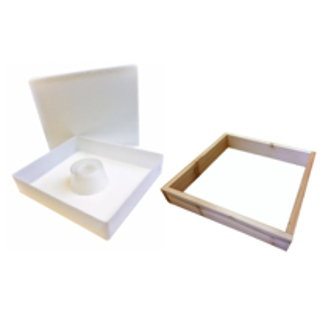
Or you could choose a feeder eke (of any hive type) plus an English feeder at a total cost of £13.00 (usually £17.70).
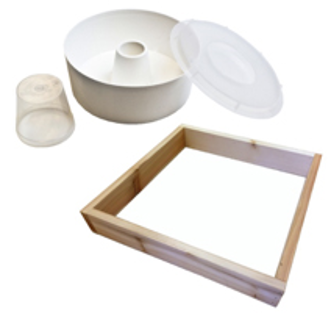
We are also offering an introductory price on our new protein supplements. 10% off both Api-Dry and Microsoja in all weights. Please apply the discount code VETOFEED in ‘Your Basket’.
We have a limited quantity of short shelf life Nektapol on offer. £5 per kilo, expires March 2020.
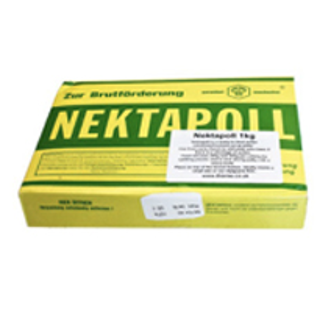
Beekeeping Blog
January 2020
Well, what a horrible month February has been! Thanks to both Storm Ciara and Storm Dennis, we made more trips to the apiaries than usual to make sure the hives were still upright and intact. Miraculously, the only bits to have made their way across the apiaries were a couple of roofs and feeders from the empty hives I had placed out. All of the hives with bees in were still standing, so I consider us to be very lucky. Time will tell what effects, if any, the storms have had on our bees.
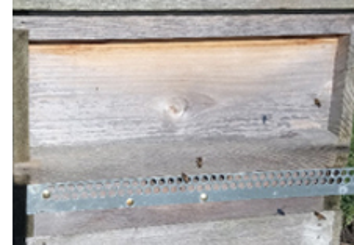
As pollen can be in short supply at this time of year, (and let’s face it, the weather has been so horrid that even if there were a lot to forage on, bees wouldn’t have been able to get to it), we fed the bees a small slab of Candipro, a protein supplement. As I have done with Nektapoll in the past, I cut the Candipro up into smaller pieces to make it easier to monitor how much protein the bees are getting through. This avoids wastage and gives an idea of the state of each colony without having to open the hive. Early on in February, although it felt cold, some days were rather sunny and the bees did actually venture out, as you can see in the first photo.
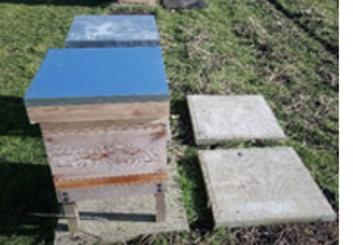
This month, the apiary has finally started to take a different shape, as the slabs arrived and were set out in blocks of four. When eventually we get all the hives in position, we should start the year with two colonies of bees and two empty hives per set of four. This will help with artificial swarms as well as being able to rest one roof on top of another during inspections and not on the floor, which will help our backs out no end!
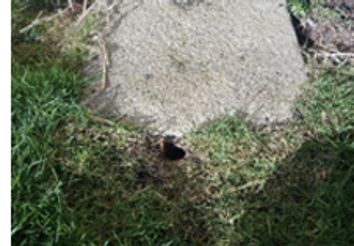
This winter has generally been quite mild in temperature and as a result there have been lots more mice about than in previous years. I have spotted a few mice and mouse holes around so I have my fingers crossed that we managed to get the mouseguards on in time last autumn… Next month, fingers crossed, we will start to see some weather more suited to beekeeping and will be able to enjoy being out in the apiary a bit more. It will probably be the last month before the season really kicks off so all those little jobs we have not yet got around to will need finishing off before we get too busy!
Disease Focus - Nosema
There are two species of nosema that have been identified in the UK, Nosema apis and Nosema ceranae. These are both fungal pathogens which invade digestive cells lining the mid-gut of the bee.
Causes
Nosema occurs when fungal spores are ingested by adult honey bees. Symptoms are more apparent when nutrition is poor, weather conditions are cold and wet and during long periods of confinement, typically spring in the UK.
Symptoms
Nosema may be hard to diagnose as there are no real symptoms of the disease. Dysentery is often associated with Nosema apis infection and can be characterized by brown spotting across the hive. It is not caused by the pathogen but as a result of infection. During long periods of confinement, some will defecate in the hive, leading to further infection. Infection by N. apis is also associated with bees crawling around the hive entrance, sometimes with wings held at odd angles. Some bees will have swollen and greasy abdomens and in severe cases may appear to be trembling. With Nosema ceranae, it has been reported that infections are characterised by a reduced number of bees in the colony, increased likelihood of disease and eventual collapse.
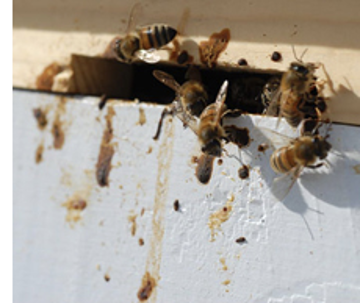
Spread
Beekeepers can spread nosema by transferring contaminated combs between colonies. The spores can remain viable for up to a year. Bees can also spread the disease by feeding on contaminated food and water, cleaning contaminated combs, robbing contaminated hives or drifting to new hives.
Diagnosis
The simplest method to diagnose a nosema infection is by microscopic examination. Both species are virtually identical when viewed using conventional microscopy, but can be distinguished by an expert eye.
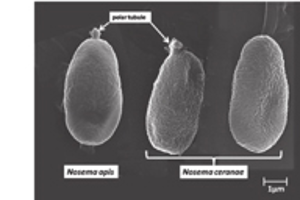
Treatment
Beekeepers can no longer use Fumidil B to treat for nosema (authorisation expired on the 31st December 2011). The best way to deal with nosema is with preventative measures i.e. maintaining strong, well fed colonies headed by young queens which are more able to withstand infections. It may help to requeen susceptible colonies with a queen from more tolerant stocks better able to cope with a Nosema infection.
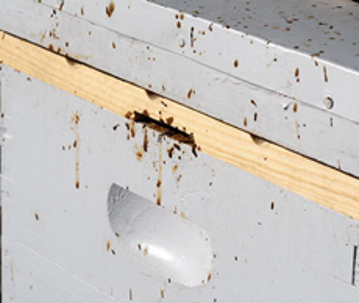
Bees for Development Update
Bees for Development is working together with The Uganda National Apiculture Development Organisation to bring the good things that beekeeping provides to people with disabilities. Click here to see a gallery of images from a training course for Deaf beekeepers held in Jinja during the last week of February.
Training course: Bees for Development has two straw skep weaving courses coming up - 19th April and 17th May. Run by Chris Park, the one day course will provide you with expert instruction in making a classic straw skep. See http://www.beesfordevelopment.org/events-calendar/ for details about these dates, and many more.
National Honey Show
Our spring leaflet with all the news about the show will be ready in a couple of weeks. You will be able to pick up copies from the Thornes stand at Bee Tradex; and/or The National Honey Show or Thornes stand(s) at the BBKA Spring Convention. If you let us know beforehand how many you need for your local BKA, we can have them packaged up ready for you. If you have any local spring shows, conferences or other opportunities to spread the word, do email Val at publicity@honeyshow.co.uk, let us know how many leaflets you would like and where to post them to. A pdf will also be available to download from the National Honey Show website www.honeyshow.co.uk.
NEWBEES STICKY FESTIVAL
Saturday 24th October 2020
Following last year’s successful day of themed entertainment for our younger audience, we hope you will encourage your younger association and family members, to come along and join us for our second year at the NewBees Sticky Festival.
This exciting festival is for the young and curious to find out more about the fascinating world of bees and the food they love through storytelling, fun activities, honey tasting and painting.
They can become a scientist when taking a peek under the lens of a microscope to see bees and pollen; and pick up a signed NewBees Sticky Festival Honey Bee Supporter Certificate.
The Saturday Sticky Festival is free to all young people who come along with a parent or guardian.
There’s lots for everyone at the show, not just Newbees, so look forward to seeing you there.
National Honey Show
22nd to 24th October 2020 at Sandown Park Race Course, Esher, Surrey, UK
www.honeyshow.co.uk
Upcoming Events
• Spring Show ordering continues
• Bee Tradex - 14th March
• Welsh Spring Convention - 28th March
• BBKA Spring Convention - 4th April
• Yorkshire Spring Conference - 18th April
